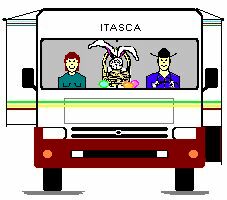FUN WITH THE LOGOS
We hope you all enjoyed the humor in the logos this year. Santa in December, Sharon waving by herself in January, Lincoln and Washington in February, The Leprechaun in March and The Easter Bunny for this month. Why Sharon in January you ask? Why not!
 Someone has to let her know that he appreciates all the "stuff" she has to put up with during these winter months. All I know is that she's a lot of fun to travel with. Besides, who else do I have?
Someone has to let her know that he appreciates all the "stuff" she has to put up with during these winter months. All I know is that she's a lot of fun to travel with. Besides, who else do I have?
